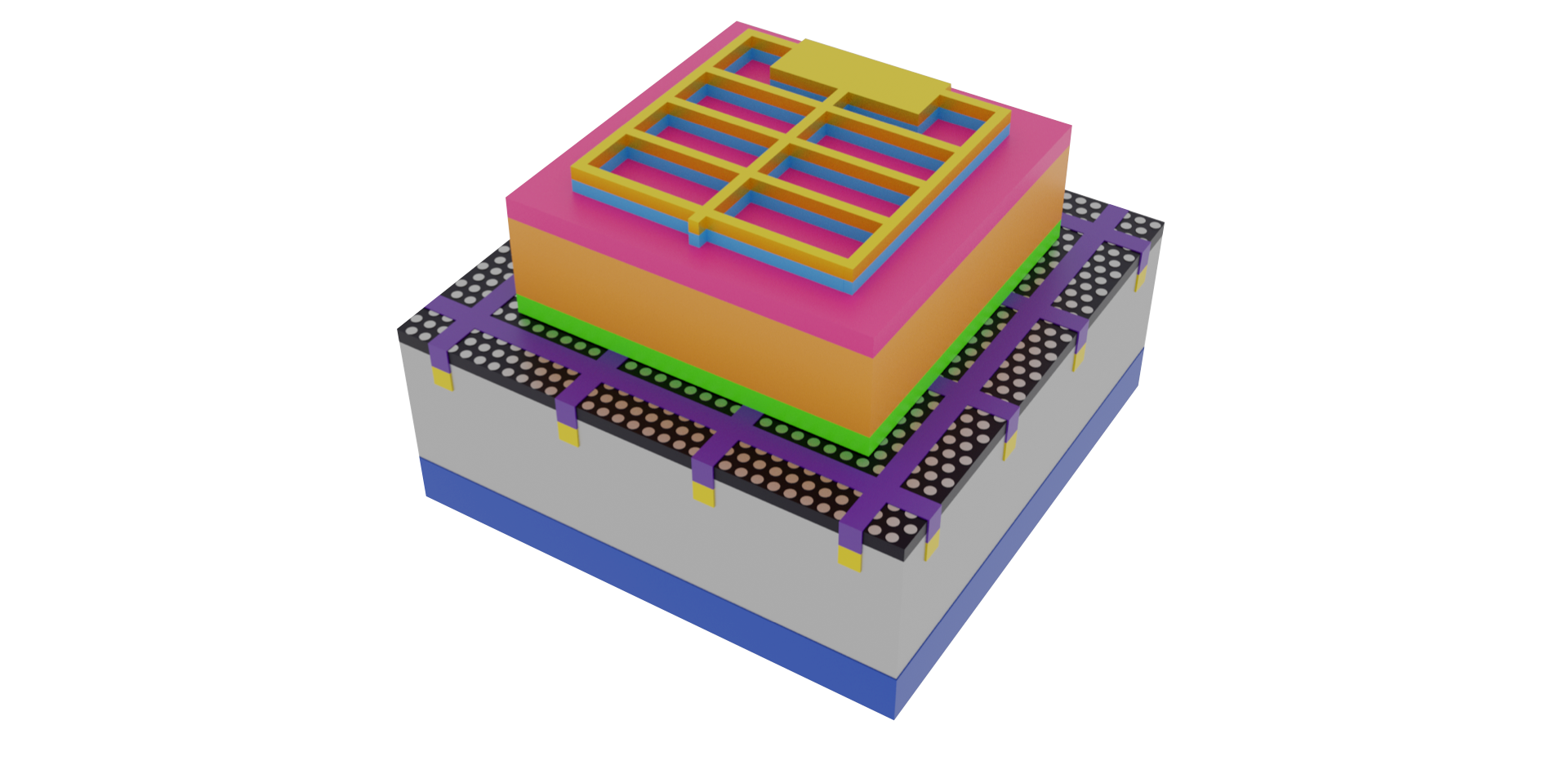Ultra-thin photovoltaics offer lightweight flexible form factors, suitable for emerging terrestrial applications such as electric vehicle integration. These devices also exhibit intrinsic radiation tolerance and increased specific power, and so are uniquely enabling for space power applications, potentially enabling longer missions in hostile environments and reduced launch costs.
In this work a GaAs solar cell with an 80 nm absorber is developed. Integrated light management is employed to compensate for increased photon transmission inherent to ultra-thin absorbers, and efficiency enhancement of 68% over a planar on-wafer equivalent is demonstrated. This is achieved using a wafer-scale technique, displacement Talbot lithography, to fabricate a rear surface nanophotonic grating. Optical simulations definitively confirm Fabry-Perot and waveguide mode contributions to the observed increase in absorption and also demonstrate a pathway to short circuit current, well in excess of the fundamental limit that could be achieved with a planar rear surface mirror.
Figure: Schematic of an 80 nm solar cell with integrated, rear surface nanophotonic structure.
L Sayre, E Camarillo Abad, P Pearce, P Chausse, P-M Coulon, P Shields, A Johnson, L C Hirst, "Ultra-thin GaAs solar cells with nanophotonic metal-dielectric diffraction gratings fabricated with displacement Talbot lithography". Prog Photovolt Res Appl. 2021; 1- 13

